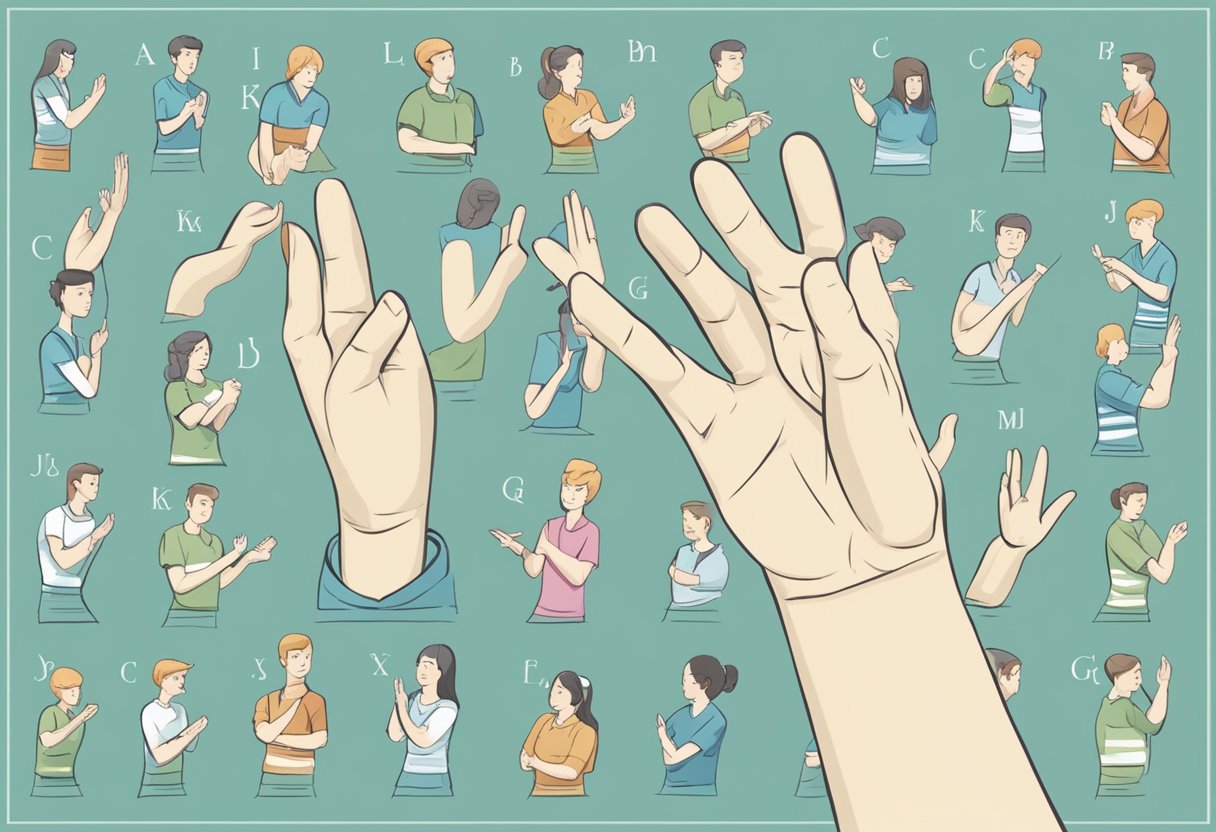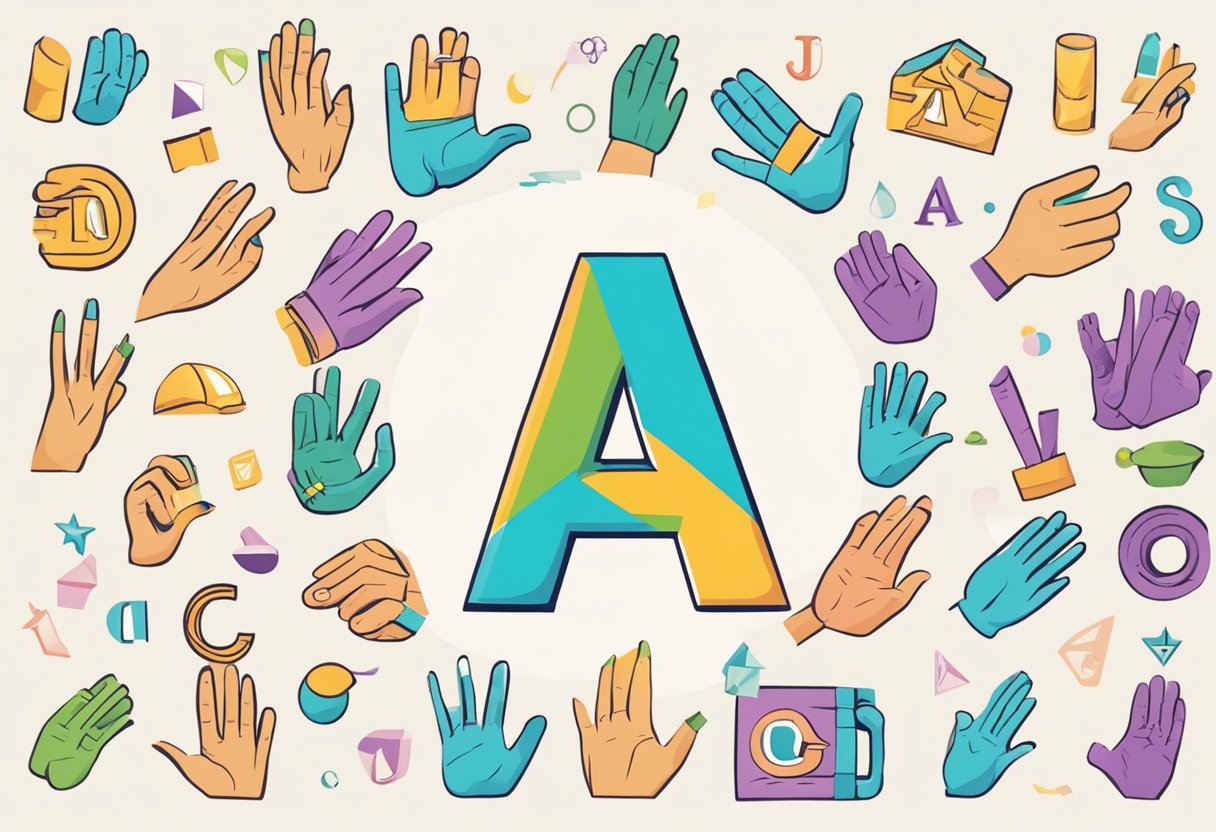
To sign the letter “A” in ASL,
- You will make a fist with your hand,
- Turn your fist so your thumb is on the side, facing away from you,
- Hold your hand up and slightly forward.
This gesture represents the letter “A” in ASL.
Learning the ASL alphabet is an important first step in mastering sign language. Once you’ve learned the individual letters, you can start to combine them to form words and sentences. Whether you’re learning ASL to communicate with a deaf friend or family member, or simply because you’re interested in a new skill, mastering the letter “A” is a great place to start.
History of Sign Language

The history of sign language is a fascinating and complex topic. The development of sign language has been influenced by many factors, including the education of the deaf, the establishment of schools for the deaf, and the recognition of sign language as a legitimate language. Today, sign language is used by millions of people around the world, and there are many different sign languages, including British Sign Language, Japanese Sign Language, and Chinese Sign Language.
Basics of Sign Language

Understanding Gestures
The foundation of sign language is comprised of hand gestures, which are used to represent letters, words, and phrases. The ABCs in sign language are the building blocks of the language and are essential to learn before moving on to more complex signs. Some signs are iconic, meaning they resemble the object or action they represent, while others are arbitrary, meaning they do not have an obvious connection to their meaning.
To sign a word or phrase, you must first understand the individual signs that make it up. For example, the sign for “hello” is made by waving your hand back and forth in front of your face, while the sign for “goodbye” is made by waving your hand away from your body. Once you have learned the individual signs, you can begin to string them together to form sentences and convey more complex ideas.
Facial Expressions and Body Language
In addition to hand gestures, facial expressions and body language play an important role in sign language. These non-manual markers can convey tone, emphasis, and emotion, and are essential for understanding the full meaning of a sign.
For example, raising your eyebrows while signing “question” indicates that you are asking a question, while furrowing your brow while signing “angry” conveys frustration or anger. Similarly, leaning forward or back, standing tall or slouching, and using eye contact or looking away can all change the meaning of a sign or convey additional information.
By paying attention to both the hand gestures and the non-manual markers, you can gain a deeper understanding of sign language and communicate more effectively with those who use it.
Learning the Sign Language Alphabet

Learning the American Sign Language (ASL) alphabet is the first step in signing. The ASL alphabet is also known as the American Manual Alphabet or sign language letters. It consists of 26 letters, each of which is represented with a unique sign in ASL.
Fingerspelling Techniques
Fingerspelling is the process of spelling out words using the ASL alphabet. This technique is used when there is no sign for a particular word or when the signer is unsure of the sign. Fingerspelling is done by using the hand to form the shape of each letter.
It is important to practice proper fingerspelling techniques to ensure that your signs are clear and easy to understand. Here are some tips for effective fingerspelling:
- Keep your fingers close together and your hand relaxed.
- Use a smooth, fluid motion when forming each letter.
- Keep your hand in front of your body and at a comfortable height for the person you are signing to.
- Use your non-dominant hand to hold the object you are referring to while fingerspelling.
Memorizing the Alphabet
Memorizing the ASL alphabet is essential for effective communication in sign language. Here are some tips for memorizing the alphabet:
- Practice each letter individually until you can form it easily and naturally.
- Use memory aids, such as associating each letter with a word that starts with that letter or creating a visual image for each letter.
- Practice fingerspelling words and phrases to reinforce your knowledge of the alphabet.
- Use online resources, such as videos and flashcards, to practice and improve your skills.

Learning the ASL alphabet is an important first step in mastering sign language. With practice and dedication, you can become proficient in fingerspelling and communicating effectively in sign language.
Practical Applications

Sign language is an essential communication tool for the deaf and hard-of-hearing community. It can be used in a variety of practical applications, including everyday communication and educational settings.
Everyday Communication
Sign language is used by the deaf community for everyday communication. It is a visual language that uses hand gestures, facial expressions, and body movements to convey meaning. Sign language can be used in a variety of settings, such as at home, work, or in public places. It allows deaf individuals to communicate with others who may not know sign language, bridging the communication gap between the deaf and hearing communities.
Educational Settings
Sign language is also used in educational settings. It is an important tool for deaf and hard-of-hearing students to learn and communicate with their teachers and peers. Sign language interpreters can be provided to facilitate communication between deaf and hearing individuals. This can help deaf students to access education and improve their academic outcomes.
In addition, sign language can be used to teach hearing individuals about deaf culture and the importance of accessibility. It can promote inclusion and understanding, and help to break down barriers between the deaf and hearing communities.
Overall, sign language has many practical applications in everyday life and education. It is an important tool for communication and can help to promote inclusion and understanding between the deaf and hearing communities.
Resources and Practice

Learning sign language requires practice and exposure to the language. Fortunately, there are many resources available to help you learn and practice sign language.
Online Tutorials and Courses
Online tutorials and courses can be a great way to learn sign language at your own pace. There are many websites and apps that offer free and paid courses, including HandSpeak® and Lifeprint. These resources offer video tutorials, an ASL dictionary, and other helpful tools to aid in your learning process.
If you prefer a more structured approach, you may want to consider taking an online course through a college or university. Many institutions offer online courses in sign language, which can provide you with a more comprehensive understanding of the language.
Community Classes and Workshops
Community classes and workshops can also be a great way to learn and practice sign language. Many community centers, libraries, and schools offer sign language classes for all levels. These classes are often taught by experienced sign language instructors and provide an opportunity to practice signing with other learners.
If you are looking for a more immersive experience, you may want to consider attending a sign language workshop or conference. These events bring together sign language learners and experts from around the world, providing an opportunity to learn from the best and practice your signing in a supportive environment.
In summary, whether you prefer online tutorials or in-person classes, there are many resources available to help you learn and practice sign language. By taking advantage of these resources, you can improve your signing skills and become more confident in your ability to communicate with the deaf and hard of hearing community.
Frequently Asked Questions

How can I learn the alphabet in sign language?
Learning the alphabet in sign language is a great starting point for anyone interested in learning this visual language. There are many resources available online, including videos and diagrams, that can help you learn the signs for each letter. One popular method is to use a visual aid, such as a poster or flashcards, to help you memorize the signs.
What are the techniques for signing individual letters, like ‘M’ and ‘N’?
Signing individual letters requires you to use specific hand shapes and movements to represent each letter. To sign the letter ‘M’, for example tuck your thumb underneath your first three fingers. Palm faces outward from your body. Then hold your hand up and slightly forward. To sign the letter ‘N’, tuck your thumb underneath your first two fingers. Palm faces outward from your body, then hold your hand up and slightly forward.
Is there a universal sign language alphabet?
No, there is no universal sign language alphabet. Different sign languages around the world use different signs to represent the letters of the alphabet. American Sign Language (ASL), for example, uses a different alphabet than British Sign Language (BSL).
Can you provide tips for remembering the signs for different letters?
One effective way to remember the signs for different letters is to associate each sign with a visual image or mnemonic. For example, you might associate the sign for the letter ‘F’ with the word ‘flower’, because the hand shape resembles the petals of a flower. Another tip is to practice signing the letters in context, such as by spelling out words or phrases.
What’s the best way to practice letters such as ‘S’ and ‘T’ in sign language?
Practice is key when it comes to learning sign language, and there are many ways to practice signing individual letters. One effective method is to use a mirror to watch yourself sign, so you can see if you’re making the correct hand shapes and movements. You can also practice signing with a partner or in a group, which can help you get feedback and improve your skills.
How do signs for words like ‘mama’ differ from single letters in sign language?
Signs for words like ‘mama’ are made up of multiple signs, which are combined to create a complete word. These signs often involve specific hand shapes and movements that are different from the signs used to represent individual letters. To learn these signs, it’s important to practice signing complete words and phrases, as well as individual letters.
